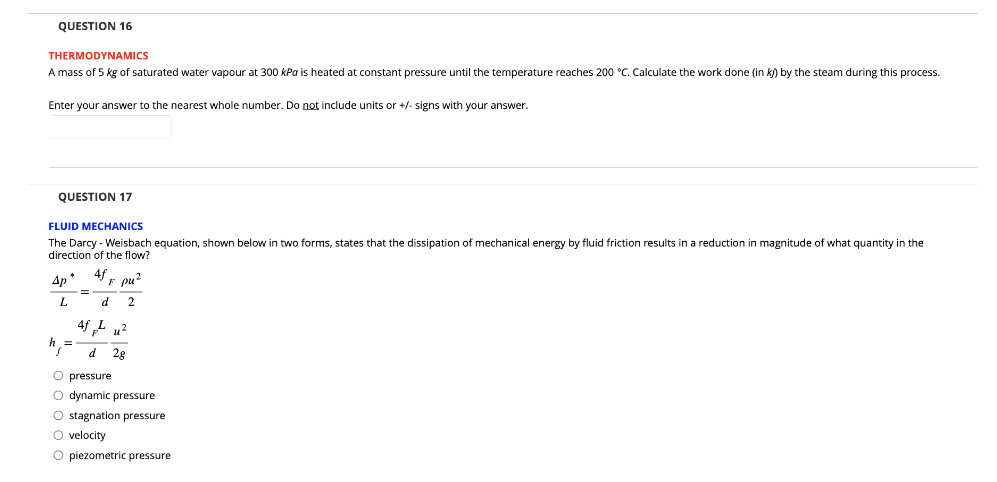QUESTION 16 THERMODYNAMICS A mass of 5 kg of saturated water vapour at 300 kPa is heated at constant pressure until the temperature reaches 200 °C. Calculate the work done (in kJ) by the steam during this process. Enter your answer to the nearest whole number. Do not include units or +/-signs with your answer.
QUESTION 16 THERMODYNAMICS A mass of 5 kg of saturated water vapour at 300 kPa is heated at constant pressure until the temperature reaches 200 °C. Calculate the work done (in kJ) by the steam during this process. Enter your answer to the nearest whole number. Do not include units or +/-signs with your answer.
Refrigeration and Air Conditioning Technology (MindTap Course List)
8th Edition
ISBN:9781305578296
Author:John Tomczyk, Eugene Silberstein, Bill Whitman, Bill Johnson
Publisher:John Tomczyk, Eugene Silberstein, Bill Whitman, Bill Johnson
Chapter2: Matter And Energy
Section: Chapter Questions
Problem 17RQ: At a constant pressure, how does a volume of gas vary with respect to the absolute temperature?
Related questions
Question

Transcribed Image Text:QUESTION 16
THERMODYNAMICS
A mass of 5 kg of saturated water vapour at 300 kPa is heated at constant pressure until the temperature reaches 200 °C. Calculate the work done (in kJ) by the steam during this process.
Enter your answer to the nearest whole number. Do not include units or +/- signs with your answer.
QUESTION 17
FLUID MECHANICS
The Darcy - Weisbach equation, shown below in two forms, states that the dissipation of mechanical energy by fluid friction results in a reduction in magnitude of what quantity in the
direction of the flow?
Ap* 4fF pu²
L
d 2
4fpu²
d
2g
O pressure
O dynamic pressure
O stagnation pressure
O velocity
O piezometric pressure
=
Expert Solution
This question has been solved!
Explore an expertly crafted, step-by-step solution for a thorough understanding of key concepts.
Step by step
Solved in 2 steps with 2 images

Knowledge Booster
Learn more about
Need a deep-dive on the concept behind this application? Look no further. Learn more about this topic, mechanical-engineering and related others by exploring similar questions and additional content below.Recommended textbooks for you

Refrigeration and Air Conditioning Technology (Mi…
Mechanical Engineering
ISBN:
9781305578296
Author:
John Tomczyk, Eugene Silberstein, Bill Whitman, Bill Johnson
Publisher:
Cengage Learning

Refrigeration and Air Conditioning Technology (Mi…
Mechanical Engineering
ISBN:
9781305578296
Author:
John Tomczyk, Eugene Silberstein, Bill Whitman, Bill Johnson
Publisher:
Cengage Learning